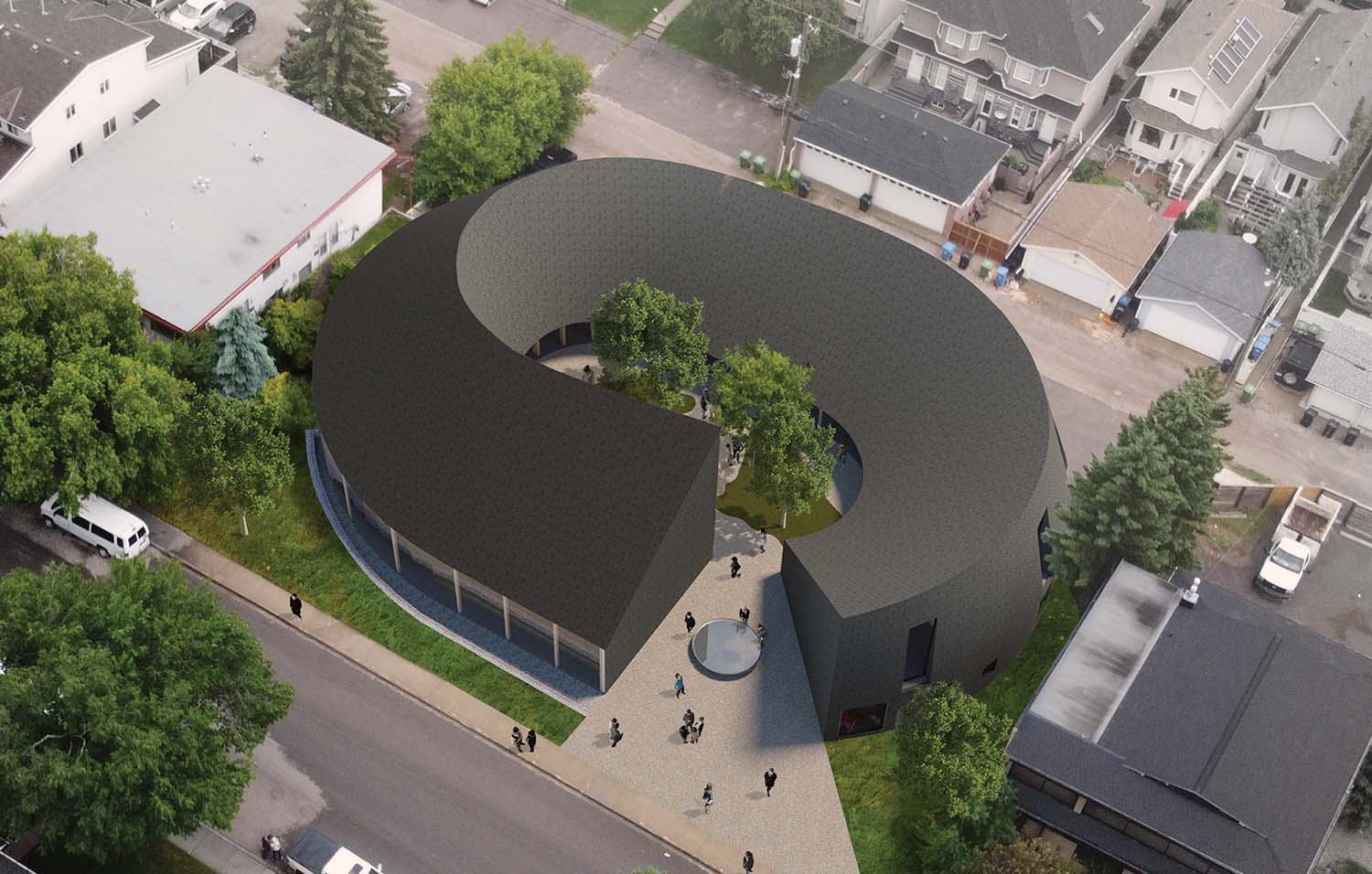Calgary Japanese Community Centre
Modern Office of Design + Architecture in collaboration with Henry Tsang Architect
WINNER OF A 2020 CANADIAN ARCHITECT AWARD OF EXCELLENCE
“This is a quiet project that creates a wonderful space in the centre. It does a lot of things very beautifully and almost effortlessly, with its approach to structure, light, and fitting into its urban context. Some of the spaces are really fantastic, like the main hall opening up into the garden, even if there are other moments in the plan that are a little awkward based on the circular plan.” – Susan Fitzgerald, juror

The Calgary Japanese Community Association currently resides in two adjacent buildings: an aging four-plex from the 1970s, and a mid-century community centre that has undergone many ad hoc renovations. To optimize the use of its property and reverse its declining membership, the Association’s board set out to create a new contemporary cultural centre and community hub for Japanese immigrants in Calgary.
Through their research, the architects learned about the notion of kakehashi, which translates literally as “bridge” or “bridge-building.” They harnessed this concept to develop a widely inclusive program that goes beyond regular cultural, social, and educational functions to also include a daycare and eight affordable senior’s housing units.

The building’s irregular form and asymmetry invoke the Japanese concepts of wabi-sabi, or appreciating imperfection, and ma, the balancing of solid and void. A discontinuous oval volume holds the diverse programs and surrounds a void space. During the schematic design process, the void developed into a contemporary interpretation of engawa—the traditional threshold between structure and garden. This threshold provides an auxiliary space and access point for the various programs. It also frames a traditional Japanese garden that is carefully relocated from the existing complex into the new courtyard.

The massing incorporates passive solar and sustainable design principles. The traveling ridgeline of the structure’s Möbius-strip-like roof responds to Calgary’s sun path, funneling natural light into the courtyard and interior. Generous overhangs control glare and heat gain. Stormwater collected from the roof surface is used for the building’s gray water needs and for garden irrigation.

The entire building will be clad with cedar shingles treated with the Japanese technique of shou-sugi-ban, a charring process that creates natural resistance to weather, fire, rot and insects, avoiding the need for toxic finishes. The project’s overall sustainability is enhanced by the use of local wood and mass timber.

CLIENT Calgary Japanese Community Association | ARCHITECT TEAM Dustin Couzens, Ben Klumper (MRAIC), Henry Tsang (MRAIC), Nicholas Tam (MRAIC), David Vera (MRAIC), John Ferguson, Anthony Schmidt, kayla Blomquist | STRUCTURAL ISL Engineering | SUSTAINABILITY Footprint | CONSTRUCTION MANAGER CREATE Construction | AREA 1,200 m2 | BUDGET $5.8 M | CURRENT STAGE Design development | ANTICIPATED COMPLETION Spring 2023
ENERGY USE INTENSITY (PROJECTED) 150-200 kWh/m2/year
WATER USE INTENSITY (PROJECTED) 4 m3/p/year
